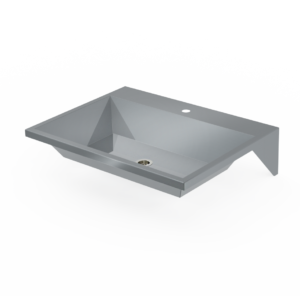Cleaning
Stainless steel equipment and fixtures must be cleaned on a regular basis to prevent them from rusting. A water wash is often sufficient for cleaning a stainless steel surface; hot water and steam can be used in special cases.
Detergents
Standard cleaning powders or power detergents such as soda, borax or sodium perborate can be used for cleaning stainless steel surfaces.
Alkaline solutions, such as soda, ammonia and diluted soda lye, can be used for dissolving grease. Acetone, petrol, alcohol and similar organic solvents can also be used for removing grease deposits or other water-insoluble matter.
Detergents that contain sulphuric or hydrochloric acid may not be used for cleaning stainless steel surfaces.
Disinfection
The sterilising agents used for disinfection often contain sodium hypochlorite or potassium hypochlorite. However, these substances are dangerous to stainless steel as they easily give rise to pitting corrosion. Other disinfectants that contain chlorine, such as chloramines, are also dangerous. The most affordable disinfectant that is suitable for stainless steel is nitric acid; even mild concentration solutions have a bactericidal effect.
Treatment after cleaning
The detergent must be carefully cleaned from the steel surface. Rinsing with plenty of water is usually sufficient for this purpose. If acidic detergents are used, a pre-rinse should be carried out with a neutralising solution, such as soda.
The user must always ensure that the room concerned is sufficiently ventilated, proper protective gear is used and any in-house occupational heath and safety instructions are complied with.



